19 Evidence-Based Benefits of Pineapple
Are you looking for a healing fruit that has exceptional taste and flavor?
Spiny on the outside, sweet on the inside, pineapple is a fantastic fruit.
Go to your local grocery store and buy a pineapple and you will reap its countless benefits, such as its ability to improve respiratory health, stimulate weight loss, strengthen bones, and much more.
Pineapples are also the only source of the plant compound bromelain, which is linked with many health benefits, such as cancer prevention, reduced inflammation, enhanced immune function, and better gut health (1).
Even though the season for pineapple runs from March through June, you can obtain it year-round in your local market.
History
In the past, the pineapple was sometimes considered a symbol of status.
Christopher Columbus and his crew members are believed to have been some of the few people from Europe to discover the pineapple on their second trip to the Caribbean in 1493.
Being enchanted by pineapple’s sweet taste, Columbus and his men embraced the fruit, imported it, and cultivated it in hot houses.
Soon after they returned to Europe, members of European royal families soon developed a liking for it.
The pineapple became a symbol of great wealth, as it could not be grown in Europe until the 1600s.
Only the rich, members of the nobility, and the elite could exploit the benefits of this expensive but fragile fruit.
In the 17th century, the pineapple gradually became available to more people.
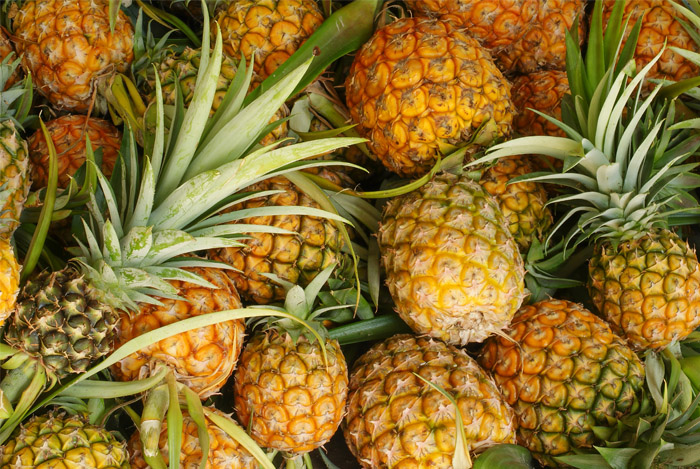
Still, it had to be transported to Europe.
During hot and humid voyages from the Caribbean to the colonies, most of the fruit rotted.
Thanks to James Dole and his pineapple plantations in Hawaii, the fruit became popular and affordable in the 19th century.
His goal was to have convenient canned pineapple in every grocery store in the country.
The “Pineapple King” as he was called made it possible for the masses to consume this powerful fruit.
Pineapples have graced tables ever since that time.
What’s more, in the 1950s, pineapple upside-down cakes and gelatin molds became popular.
Today, pineapples are found in a wide range of cuisines.
In addition to consumption, pineapple leaves are used to produce the textile fiber piña in the Philippines.
The fiber is also used as a component for wallpaper and other furnishings.
The word “pineapple” in the English language was first recorded in 1398.
It was originally used to describe the reproductive organs of conifer trees, now called pine cones.
When European explorers came in contact with the tropical fruit for the first time, they called them pineapples.
The term was coined because of their resemblance to what is now known as the pine cone.
The term pine cone was first recorded in 1694 and was used to replace the original meaning of pineapple.
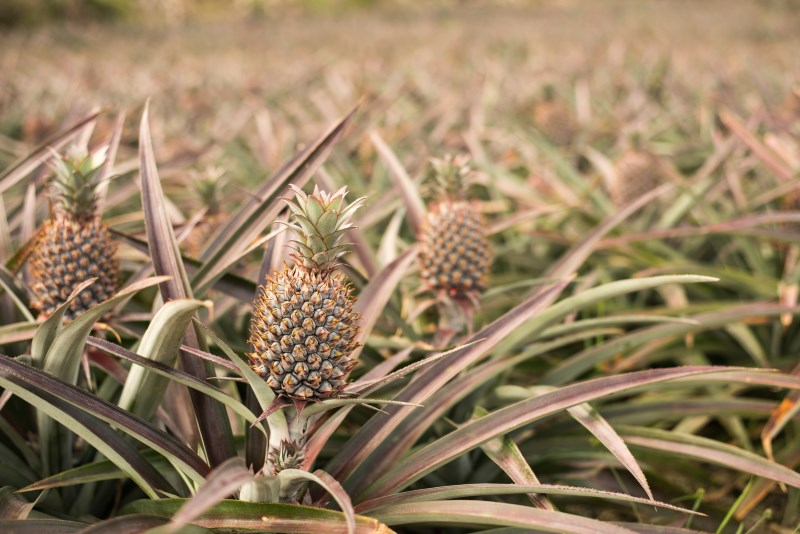
How Pineapple Grows
The pineapple (Ananas comosus) is a tropical plant with edible berries, also called pineapples.
Contrary to common belief, the pineapple does not grow on trees. Actually, it grows on a leafy plant.
The plant has stocky leaves whorled around a central stem.
In a healthy pineapple plant, the tapered, swordlike leaves can grow up to about 1.5 meters (5 feet) long.
The pineapple fruit grows out of the top of the central stem.
Actually, the fruit is the result of a dozen of individual fruit-producing flowers that have fused into a single fruit.
Pineapples are not grown from seeds, unlike most fruits.
Common commercial varieties of pineapple are “self-incompatible,” meaning that the plant’s pollen cannot fertilize members of the same variety.
Unless different varieties are grown next to one another and flower simultaneously, the plant will produce a seedless fruit that develops without fertilization.
The crown of the pineapple contains small roots when removed.
If it is planted in the ground or a pot, a new fruit-producing plant will grow.
In addition, the plant’s “suckers” (side shoots growing between the leaves of the main stem) and slips (tiny plantlets growing out from the base of the pineapple fruit) can produce new plants when replanted.
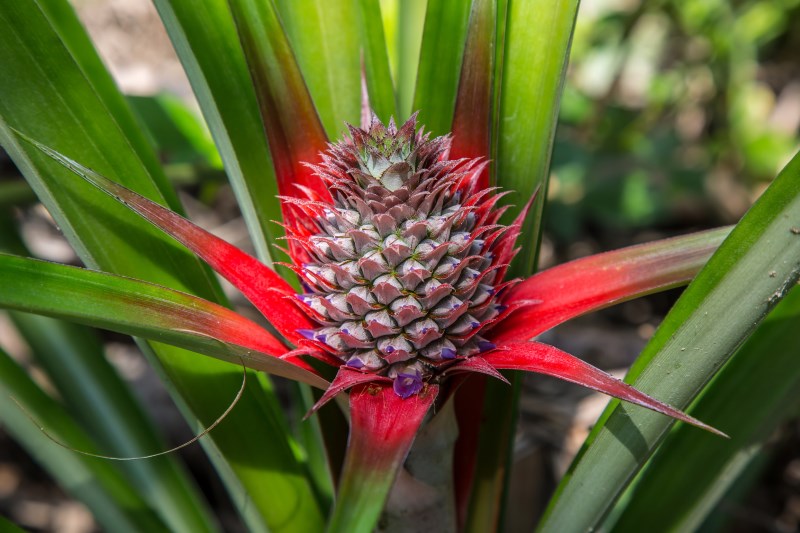
Interesting Facts
Who does not love the taste of pineapple?
They’re definitely one of the most unusual looking tropical fruits, but what do you really know about them?
Shown below are ten fascinating pineapple facts!
- The most common pollinator of pineapple is the hummingbird. Pollination is necessary for seed formation, but the presence of seeds negatively affects the fruit’s quality.In Hawaii, the pineapple is cultivated on an agricultural scale, which is why importation of hummingbirds is prohibited by law.
- The fruit is known as ananas in most countries.Columbus named the fruit after the Spanish word “piña” and called it piña de Indes, meaning “pine of the Indians.”The English adopted the name “pineapple” from the Spanish, while most European countries eventually adopted the name ananas, which came from the Tupi word nanas, meaning excellent fruit.
- Henry Ginaca invented the first coring and peeling machine. Henry Ginaca, an American engineer and James Dole’s associate, invented a machine that could automatically peel and core pineapples. It could core and peel 35 pineapples a minute. Thanks to his invention, the production of pineapples increased, which revolutionized the canning industry.
- Nothing is wasted in the process of canning. When you cut up a pineapple at home, you normally chuck the skin, core, and ends in the bin. Pineapple canneries use every bit of the fruit. The core, skins, and end portions are used to make a great variety of products, including alcohol, vinegar, and animal food. The pineapple is exceptionally valued because you do not have to waste anything.
- Pineapples grow slowly. It usually takes up to two years for a pineapple to reach full size. Usually, you pick it and eat it when it is much smaller, but it can actually grow much bigger. The world record is currently 8.28 kg (18.25 lbs), set in 2011 by Christine McCallum from Bakewell, Australia. If you want to speed up the ripening of the pineapple so that you can eat it sooner, you can put it upside down on the leafy end.
- Pineapple was the main motif of paintings and advertisements.

This is an advertisement for Dole’s canned pineapple painted by Lloyd Sexton.

This is a painting by Hendrik Danckerts from 1675 depicting Charles II being delivered the first pineapple grown in England by his royal gardener, John Rose.
Nutrition Facts
Pineapple is also a storehouse of many health benefits.
It has nutrients, vitamins, and minerals, including copper, potassium, calcium, magnesium, manganese, vitamin C, thiamin, B6, beta-carotene, and folate as well as soluble and insoluble fiber and bromelain (2, 3).
A fresh pineapple contains 50 calories per 100 grams, which amounts to only 83 calories per cup (165 grams).
It is made up of water (86%) and carbohydrates (13%), with almost no fat or protein.

Health Benefits Of Pineapple
Consuming vegetables and fruits of all kinds has long been associated with a reduced risk of many lifestyle-related health conditions.
Many studies have suggested that eating more plant foods, such as pineapples, decreases the risk of obesity, heart disease, and diabetes and also promotes a healthy complexion and hair, lower weight, and more energy.
Nonetheless, most of the health benefits of pineapple are attributed to bromelain.
You should also be aware, though, that many studies have been based on bromelain obtained from stems, where this compound is found in higher amounts.
Since the stems are usually not eaten, bromelain supplements, also known as “pineapple extract,” are on the market and may be needed to obtain some of the health benefits.
Here are 19 scientifically proven benefits of pineapple.
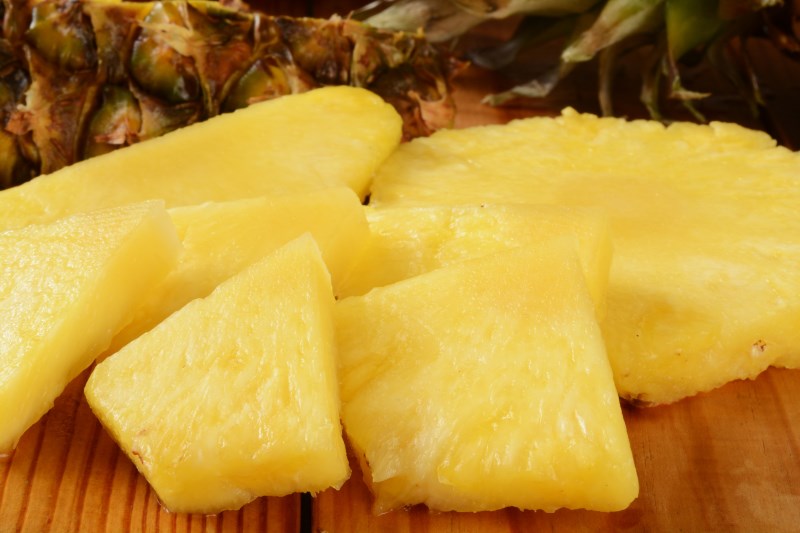
Great Source of Good Carbs
Carbohydrates in pineapple are mostly simple sugars, such as fructose, sucrose, and glucose.
Pineapple also contains some fiber.
A single cup (165 grams) of pineapple contains 21.7 grams of carbohydrates and 2.3 grams of fiber, meaning that 19.4 grams of digestible carbs are present in each cup.
The glycemic index value (GI) of pineapple can range from 45 to 66, which is in the medium range (4).
Pineapple should not have a major impact on blood sugar levels, at least not in healthy people.
Regarding fiber, one cup of pineapple contains 2 grams, almost all of which is insoluble (99%).
These are mostly in the form of cellulose, hemicellulose, and pectin (5).
Insoluble fibers have been associated with a reduced risk of type 2 diabetes and healthy digestion (6, 7, 8, 9).
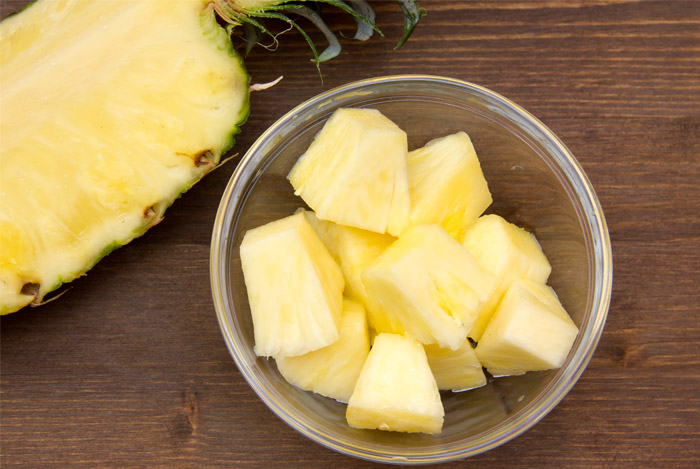
Vitamins and Minerals
Pineapple is a good source of several vitamins and minerals.
One single cup of pineapple provides 132% of the recommended daily intake for vitamin C and 76% for manganese.
These are the most abundant vitamins and minerals in pineapple.
- Vitamin C: A vitamin that has antioxidant properties and is required for immune function and healthy skin (10, 11).
- Manganese: An essential trace mineral usually found in high amounts in vegetables, fruit, whole grains, and legumes.
- Copper: A trace mineral that is critical for many important functions in the body, such as being a cofactor in the production of red blood cells (12).
- Folate (B9): Part of the vitamin B family, important for normal cell function and tissue growth and particularly important for pregnant women (13).
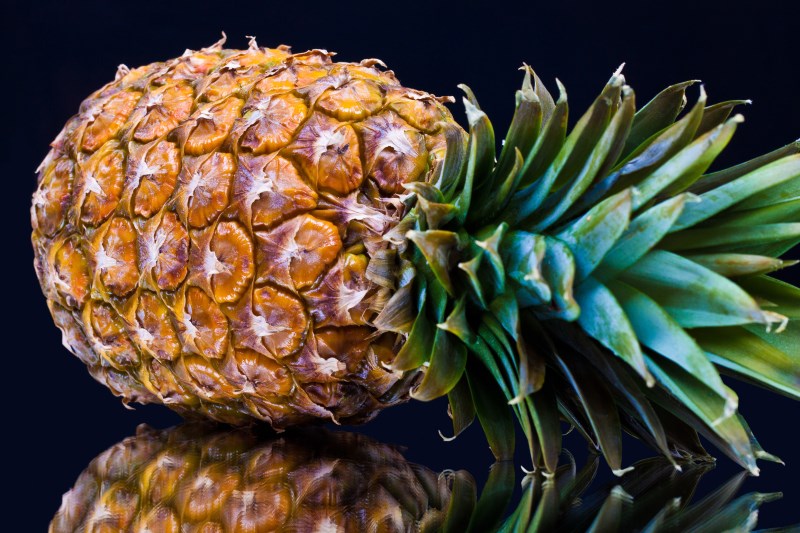
Other Plant Compounds
Bromelain is the most studied and appreciated plant compound in pineapple, but it also contains antioxidants, such as anthocyanins (14).
- Bromelain: A unique protein-digesting enzyme. Besides only being found in pineapple, it may also have many health benefits, such as reducing the risk of cancer, facilitating wound healing, and improving gut health (15).
- Anthocyanins: Pineapple contains low amounts of anthocyanins, which are powerful antioxidants associated with a reduced risk of many diseases, including heart disease (15, 16).
Thanks to its bromelain content, you may use pineapple juice to tenderize meat.
Bromelain is also capable of breaking down meat proteins.
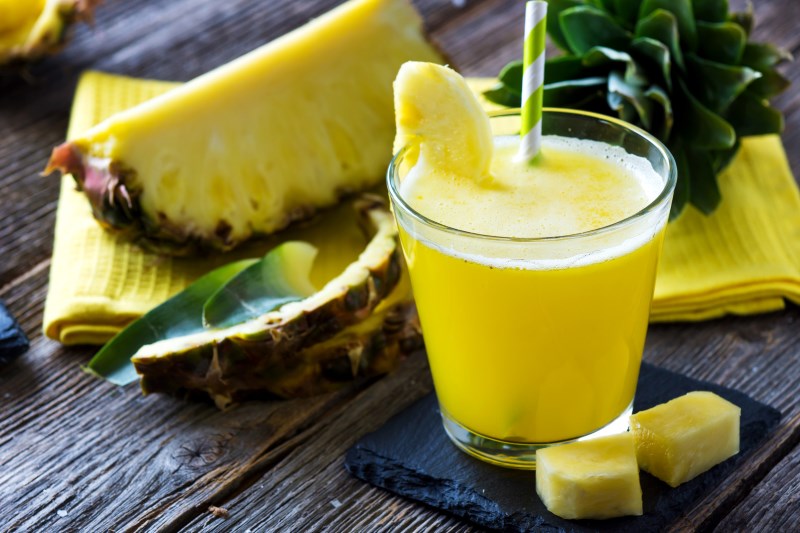
Improves Immunity and Reduces Inflammation
The immune system functions to protect the body against disease, fight off harmful microorganisms, and repair damage.
Thanks to the Department of Internal Medicine II at the University of Tübingen in Germany and Barth, Guseo, and Klein, three renowned scientists there, bromelain has been shown to strengthen the immune system and reduce inflammation (17).
Other test-tube studies confirm their thesis (18, 19, 20).
Also, according to the Department of Pathology at the Duke University Medical Center in Durham, North Carolina, bromelain may stimulate immune responses, thus reducing the severity of inflammation, and have beneficial effects in asthma and allergic airway diseases (21, 22, 23, 24, 25).
According to human studies conducted at the School of Nutrition, Philippine Women’s University in Manila, Philippines, eating pineapple or taking a bromelain supplement may shorten the duration of sinus infections, reduce inflammation, prevent the formation of blood clots, and stimulate immune responses, especially in children (26, 27, 15, 28).
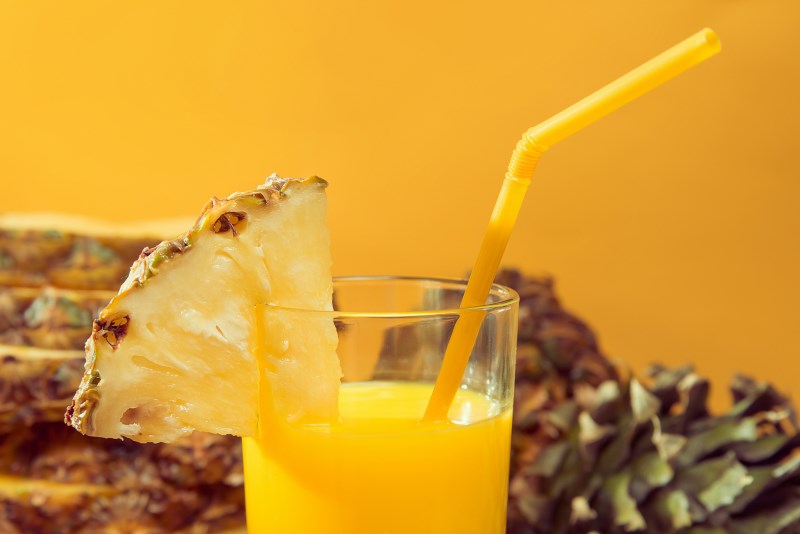
Lowers Risk of Cancer
Cancer is one of the main causes of death and disability around the world.
It is mainly characterized by uncontrollable cell growth that may invade and harm the surrounding tissues.
Diets high in deep-yellow vegetables and fruit have been associated with a reduced risk of colon cancer (29).
Various test-tube studies, including the results of the Department of Pharmacy, University of Naples Federico II, in Naples, Italy, have shown that bromelain may prevent the growth of cancer cells as well as lead them to apoptosis, that is, cell death (30, 31, 32, 33, 34, 35).
Nevertheless, more human studies are needed to assess these effects.
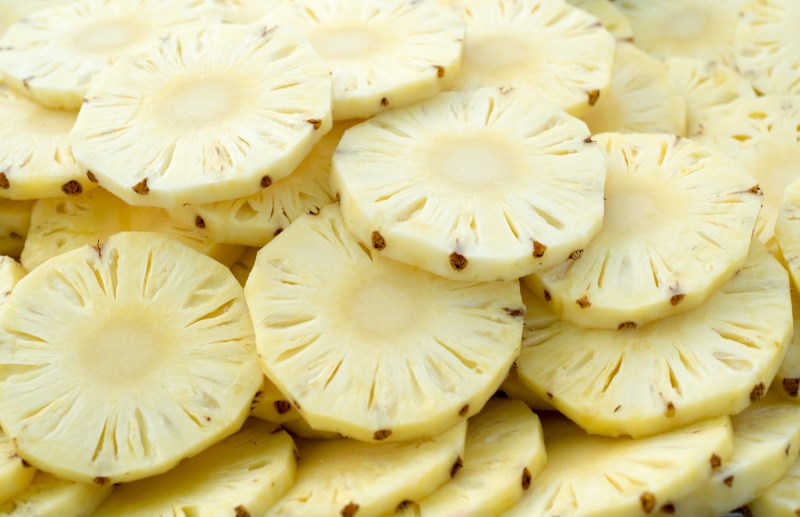
Facilitates Wound Healing
The body has the ability to heal wounds and repair itself after injury, but the process may be interrupted by various factors, such as diabetes, heart disease, and old age (36, 37).
One test-tube study conducted in Germany at the Saarland University has shown that bromelain in pineapple may be used to enhance wound healing (38).
It is a promising concept for the future.
Both bromelain and fresh pineapple juice have been proven to aid wound healing in animal studies by reducing inflammation and accelerating recovery (39, 40, 41, 42).
A bromelain-based lotion has been shown to facilitate the healing of skin burns in humans (43).
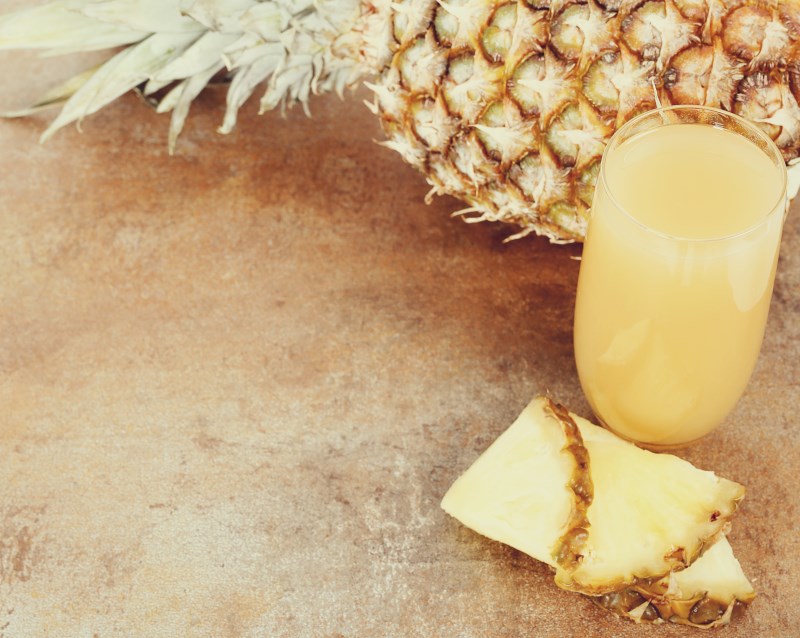
Improves Gut Health
The number of bacteria in our body is much larger compared with the number of cells.
Most bacteria reside in the gut.
Numerous health benefits result from maintaining healthy gut flora (44).
Beneficial gut bacteria stimulates digestion of pineapple, thereby causing minimal bloating and gas (45).
Several animal studies, including one conducted by the Victorian Institute of Animal Science, Attwood, Australia, indicate that pineapple and bromelain may be effective in treating digestive diseases by reducing gut inflammation, which prevents diarrhea (46, 47, 48, 49, 50, 51, 52).
Bromelain also stimulates protein digestion, so it is recommended for people who are prone to indigestion caused by a protein-rich meal, such as steak.
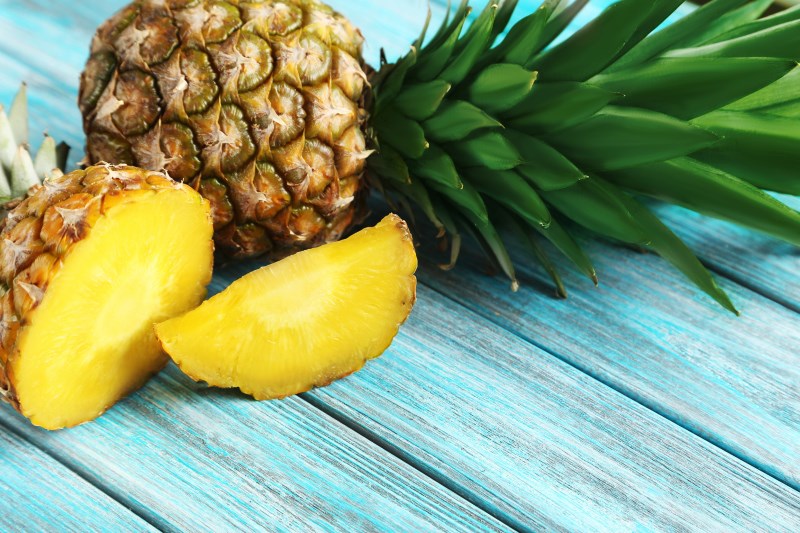
Strengthens Bones
Pineapple is beneficial for helping you stand tall and be strong.
Even though pineapple does not have large amounts of calcium, it is loaded with an impressive amount of manganese (53).
Manganese is a trace mineral your body needs to build bone and connective tissue, as well as their growth and repair, according to the Linus Pauling Institute (54).
One 1994 study conducted by the Department of Biology, the University of California at San Diego suggested that manganese, along with other trace minerals, may help in preventing osteoporosis in postmenopausal women (55).
Moreover, eating pineapple can affect bone growth in young people as well as strengthening bone in older people.
Just one cup of pineapple provides 70% of your daily recommended intake of this essential mineral.
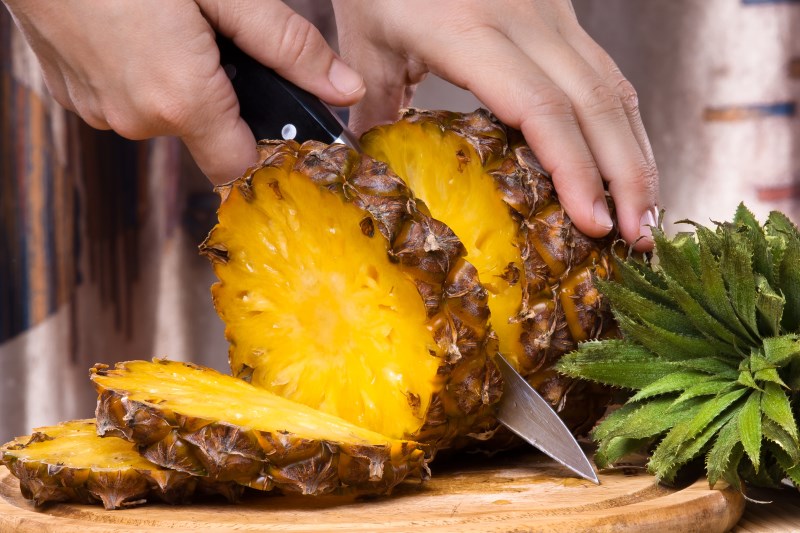
Improves Eye Health
Vision is undoubtedly one of the most important senses for human beings, if not the most important one.
It is our dominant sense, and we collect most of our information through visual perception.
If you want to keep your eyes healthy, pineapple can help you.
It has been directly associated with boosting eye health and preventing age-related deficiencies that often occur.
As people age, the risk of macular degeneration increases, which is the main cause of vision loss in the elderly.
To prevent or at least delay vision problems, you should eat pineapple because it contains high amounts of vitamin C and beta-carotene, a powerful antioxidant.
Based on the findings of the Eye Diseases Prevalence Research Group, it has been demonstrated that the likelihood of vision loss from macular degeneration can be reduced in individuals who eat foods rich in beta-carotene, such as pineapple (56).
Vitamin C also helps protect your vision. At a Department of Ophthalmology in China, a recent study has shown that a higher intake of vitamin C reduces the risk of developing cataracts, which is cloudiness of the lens that can interfere with vision (57).
Based on research findings, vitamin C intake is important for the primary prevention of cataracts.
To put it simply, keep your daily intake of beta-carotene high, and make sure that fruits and vegetables are included in your diet.
Doing this will help you see the world well into your old age.
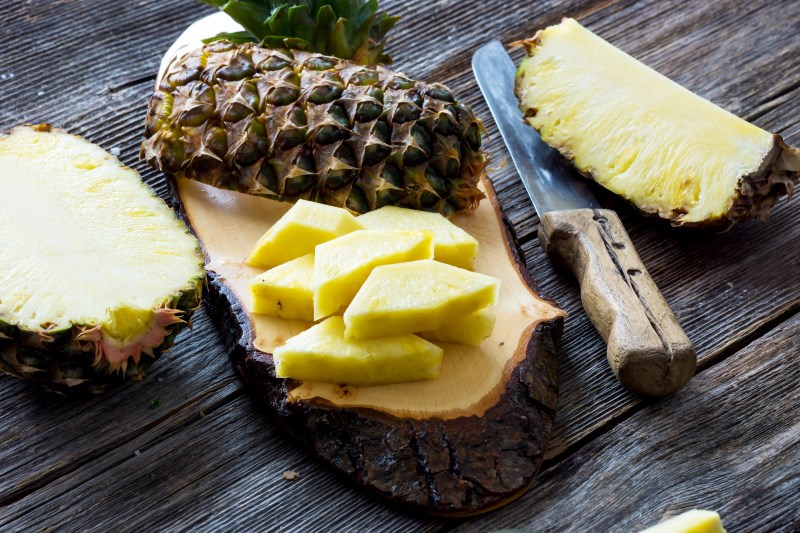
Stimulates Improved Digestion
Like most fruits and vegetables, pineapple is a rich source of fiber, but it also contains both soluble and insoluble fiber, which makes it rather unique (58).
According to the Mayo Clinic, eating pineapple will help keep your intestines healthy (59).
Consuming the recommended amount of pineapple can protect you from a wide range of health conditions, including diarrhea, constipation, irritable bowel syndrome, blood clotting, atherosclerosis, and high blood pressure.
Unlike most fruits and vegetables, however, pineapple is a rich source of bromelain, an enzyme that promotes the breakdown of protein, possibly helping digestion, according to the American Cancer Society (60).
Fiber can also bulk up the stool, which stimulates the passage of food through your digestive tract at a normal rate.
It also promotes the release of gastric and digestive juices to help food dissolve.
Moreover, fiber bulks up loose stools, which helps with IBS and diarrhea.
Fiber also helps clean the blood vessels of excess cholesterol and eliminates it from the body, thus boosting cardiovascular health.
Fresh pineapple juice, another by-product of the pineapple, also aids in removing intestinal worms.
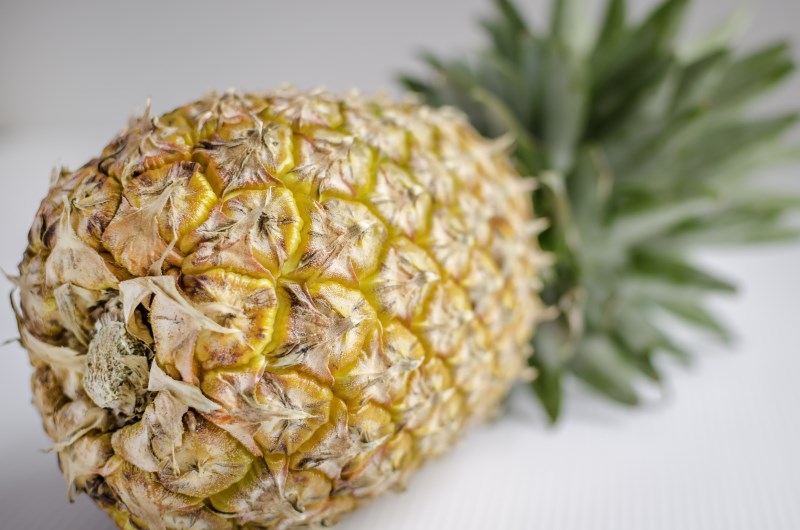
Promotes Tissue and Cellular Health
Looking youthful is everyone’s goal, and pineapple can help you be successful.
This fruit will help keep your skin flexible and firm because it increases collagen synthesis.
Collagen, the support system of your skin, is the essential protein base for blood vessel walls, organs, bones, and skin.
Vitamin C is one of the most underrated antioxidants because its essential role in creating collagen is often overlooked (61).
Collagen production aside, foods containing high amounts of vitamin C also help you quickly heal wounds and injuries to the body as well as defend against illnesses and infections.
When eaten in its natural form or applied topically, vitamin C can be helpful in fighting skin damage caused by the sun and pollution, reducing wrinkles, and improving overall skin texture.
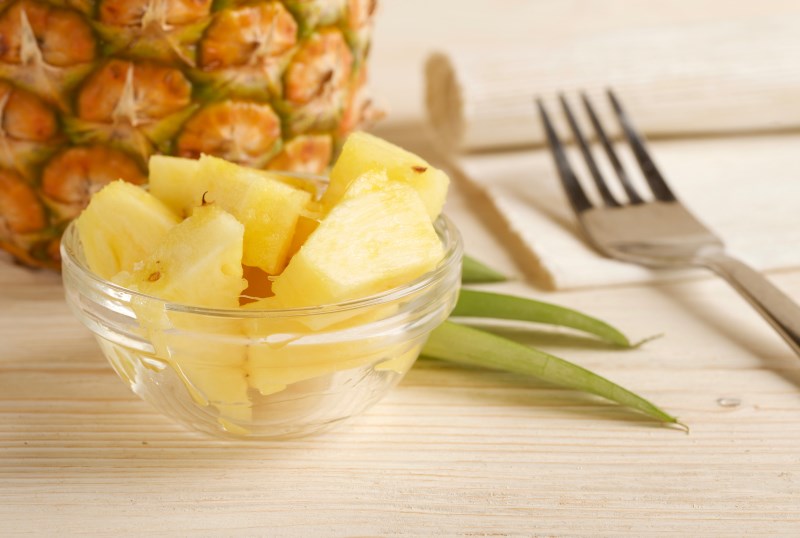
Alleviates Symptoms of the Common Cold
The numerous benefits of vitamin C are well known, but that special enzyme, bromelain, has been shown to reduce mucus and phlegm built up in the respiratory tracts and sinus cavities, according to the University of Maryland Medical Center (62).
A study conducted at the Institute of Naturopathy, University of Cologne, Germany, has shown that taking the proteolytic pineapple enzyme bromelain had positive effects on young children diagnosed with acute sinusitis (63).
This enzyme prevents the illnesses that cause phlegm and mucus buildup, while also treating them by loosening those materials and helping you eliminate them from your body if you have already contracted an illness or infection.
So, if your cold has you coughing, eat some pineapple chunks.
If you are allergic, you may want to consider incorporating pineapple into your diet on a more regular basis to reduce sinus mucus for the long term.
On the other hand, bronchitis is an uncomfortable condition that mostly results in a forceful and frequent cough.
The condition disrupts your sleep and makes it harder to live a more fulfilling and responsible life.
The anti-inflammatory properties in pineapple help you reduce the inflammation in your airways, being the main cause of this condition.
When inflammation is alleviated, you will find it easier to breathe.
Lastly, bromelain has also been found to prevent asthma.
According to the Department of Immunology, University of Connecticut School of Medicine, bromelain has a therapeutic effect in established allergic airway disease as well as being an effective adjunctive therapy in patients with similar conditions, such as allergic asthma (65).
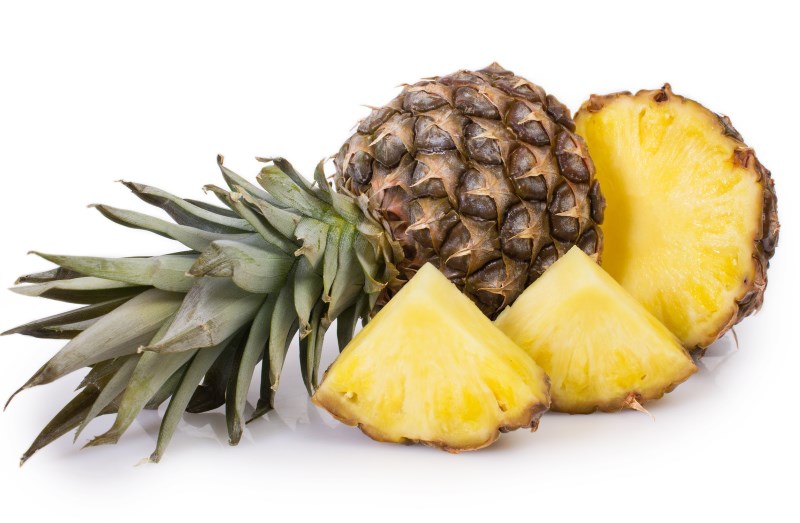
Strengthens Gums
Along with the antioxidant compounds that prevent oral cancer, pineapple also has astringent properties, which strengthen your gums and prevent your teeth from becoming loose (66).
You must keep your gums healthy, as they hold the teeth in place.
If you have unhealthy gums, your teeth will also suffer and be in bad condition.
Furthermore, astringent agents aid in tightening tissues and toning the body so that body issues, such as muscle weakness, hair loss, tooth loss, or skin loosening, do not occur.
Since it is packed with these powerful astringents, pineapple is often prescribed as a natural remedy to fix the loosening of teeth or retraction of the gums.
Eating a recommended dosage of pineapple strengthens your gums and keeps your teeth healthy and strong, which will help you as you grow older.
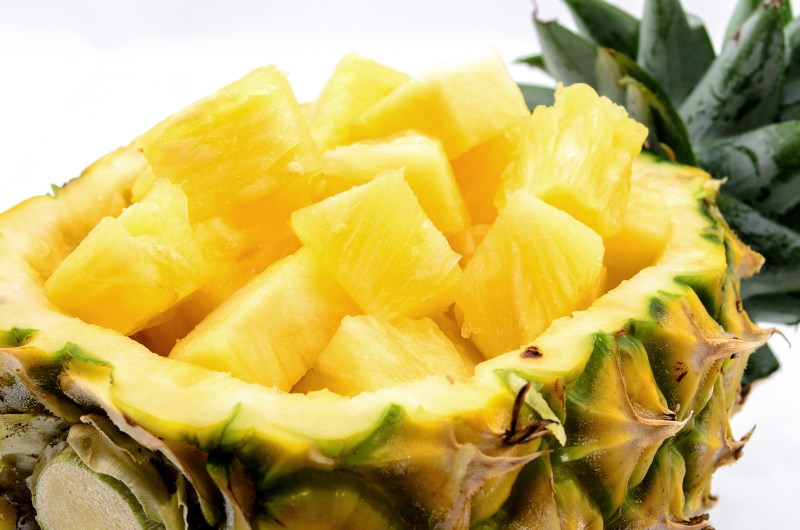
Helps Prevent Atherosclerosis
Atherosclerosis is a disease in which plaque of fatty materials is deposited in the inner walls of our arteries (67).
This condition can cause serious health issues, such as heart attack, stroke, and even death.
The main cause of atherosclerosis is free radicals as well as bad cholesterol (LDL-cholesterol).
The antioxidants present in pineapple may help prevent atherosclerosis by increasing the good cholesterol (HDL-cholesterol) and decreasing the bad cholesterol.
Epidemiologic studies have demonstrated an association between increased intake of antioxidant vitamins, such as vitamin E and vitamin C, and reduced morbidity and mortality from coronary artery disease, including atherosclerosis (68).
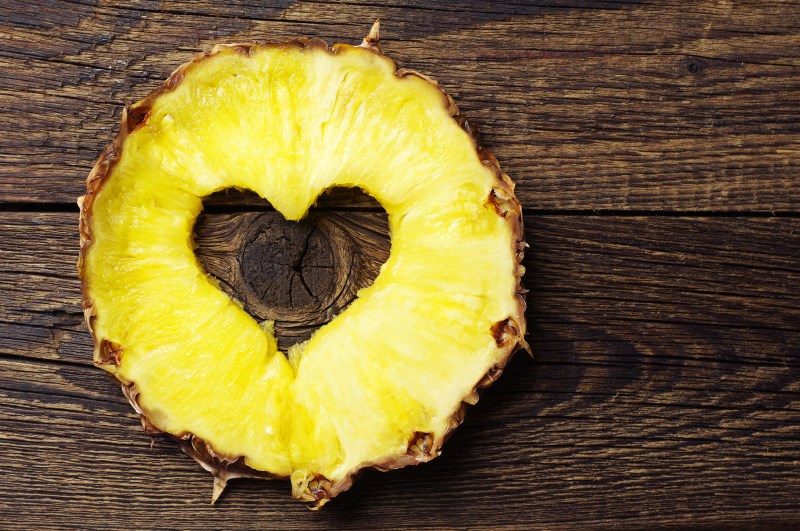
Reduces Blood Pressure Levels
High blood pressure occurs when too much force is exerted on artery walls while the blood circulates.
Pineapple is a valuable source of many minerals, including potassium, which is one of the most important minerals in our body.
Higher amounts of potassium and lower amounts of sodium in pineapple help you maintain normal blood pressure levels.
On the other hand, potassium deficiency can lead to a wide array of health hazards, including the function of potassium as a vasodilator.
In one of their studies, the Departments of Physiology and Chemical Engineering, Michigan State University, have shown that potassium is related to relaxation of the vascular smooth muscle cell (69).
Potassium can help ease the tension and stress of the blood vessels and promote blood circulation to various parts of the body.
When your blood vessels relax, your blood pressure is lowered, and blood flow is less restricted.
This can prevent clots from blocking the flow of blood and reduce the accumulation of plaque in arteries and vessels.
This benefit of potassium helps people prevent such health conditions as heart attacks, strokes, and atherosclerosis.
So, eat your pineapple for a healthy heart!
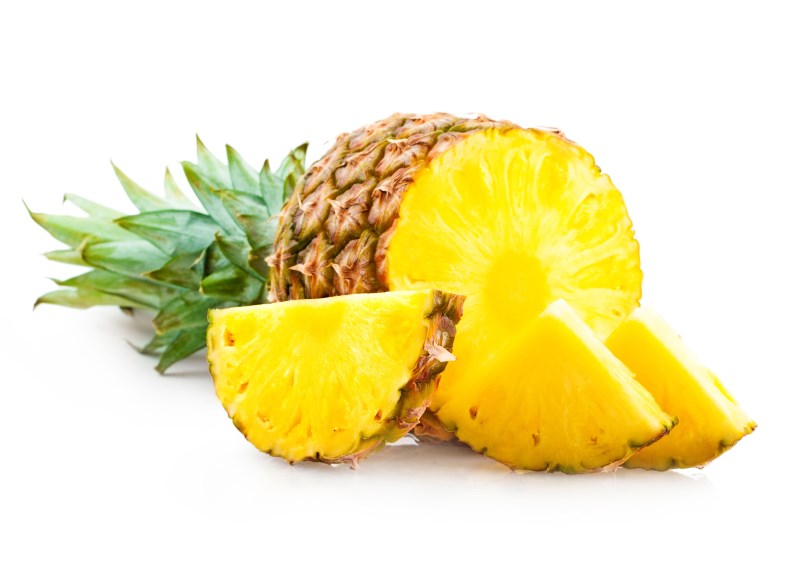
Improves Blood Circulation
Besides the vasodilating potential of potassium, pineapple also provides the body with copper, another essential mineral that is important in a number of enzymatic reactions and compounds in the body (70).
Most notably, copper is a necessary mineral for the formation of healthy red blood cells, which are responsible for delivering oxygen to the various organ systems, thereby causing them to function at optimal levels.
Moreover, it also increases cognitive abilities and can maintain neural pathways to prevent neural disorders, such as Alzheimer’s disease and dementia.

Boosts Fertility
Diets rich in antioxidants have been shown to improve fertility.
Free radicals are the main cause for the damage done to the reproductive system, so foods with high antioxidant content, such as pineapple, that battle free radicals are recommended for those trying to conceive.
Pineapple contains several beneficial vitamins and minerals, including beta-carotene, vitamin C, copper, zinc, and folate.
Many of these elements can help boost fertility in both men and women (71).
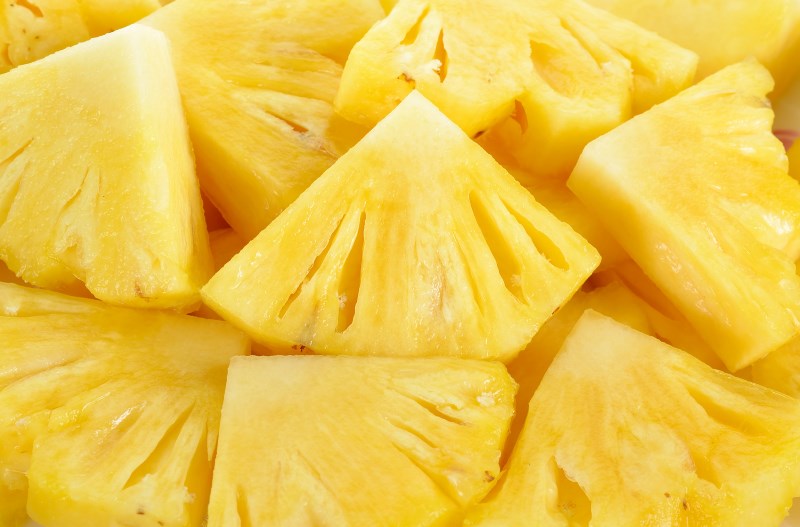
Averts Nausea or Morning Sickness
Many people, especially pregnant women, experience nausea on a regular basis.
Eating pineapple early in the morning can help reduce nausea and vomiting caused by morning sickness.
Pregnant women often experience nausea, so it is advisable for them to include pineapple in their diet, according to the American College of Healthcare Sciences in Portland.
The nausea-relieving effect can be attributed to high amounts of vitamins and minerals in the pineapple, especially vitamin B6 that helps relieve the symptoms of pregnancy-induced nausea.
So, if you suffer from morning sickness, consider having a bowl of fresh pineapple or drinking pineapple juice first thing in the morning.
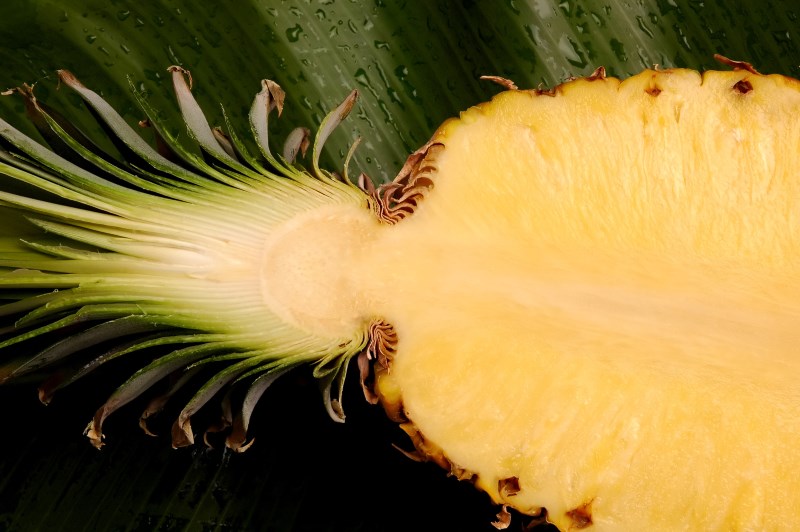
Good For Weight Management
Pineapple is a great fruit for those trying to lose weight because it makes you feel full and provides energy without adding too many calories.
One-half cup of fresh pineapple contains fewer than 60 calories.
The fruit also has a high water content and is rich in fiber, which keeps you satiated for a longer time.
Pineapple has also been shown to reduce stomach bloating.
According to a study conducted by the Universty of Maryland, the enzyme bromelain reduces stomach bloating, which leads to better digestive function and a flatter waist (73).
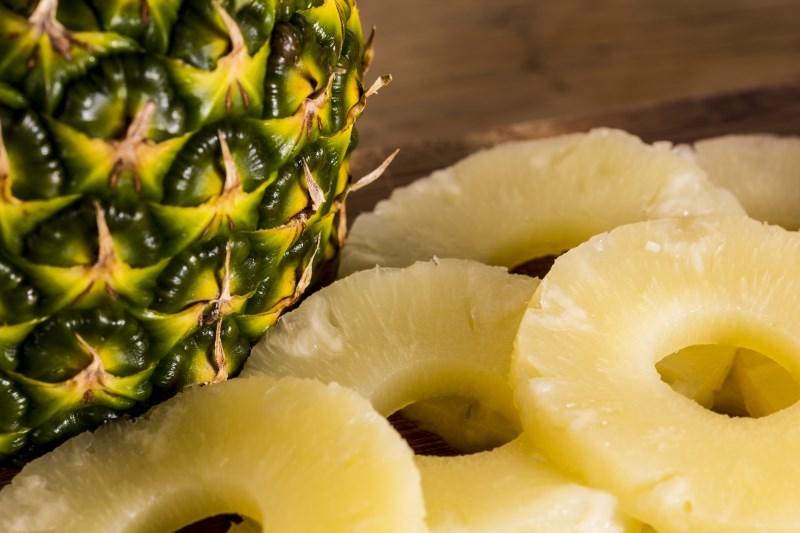
How to Buy and Store
Since pineapple does not continue to ripen after being harvested, it is important to know how to choose a ripe one.
Once you have mastered identifying the signs of ripeness and avoiding deterioration, you may want to store your pineapple to enjoy later.
Selecting a Pineapple
When choosing a pineapple, you should keep two things in mind.
Ripeness is the measure of whether or not the fruit is ready to eat, whereas deterioration indicates if the fruit has begun to break down.
- You can tell if the fruit is ripe by the yellow-gold color present on its skin.
- You can tell if the fruit has deteriorated by its wrinkled skin.
Evaluate the Color of Pineapple Skin
The skin should be vibrant green and yellow in color with no white or browned areas.
Depending on the type of pineapple, coloring should be more yellow than green.
- The yellow-gold color should be present around the base and around the eyes of the fruit.
- There is little chance to tell if a pineapple is feasibly ripe while fully green, so it is rather risky to purchase a fully green pineapple.
- The higher the yellow-gold reaches on the pineapple, the more evenly flavored the pineapple will be.
Feel the Pineapple to Check if It is Ripe
Even if the color fits the ideal description, that is not a guarantee it is ripe.
To be sure, you should feel the consistency and yield of the skin.
- Feel the fruit by gently squeezing it. It should be firm, but the skin should give slightly.
- There should not be squishy or indented spots. A good pineapple that is juicy and ripe will feel heavy.
Check the Size of the Eyes from the Top to the Bottom
Pineapples should all be similar in color and size and be free of mold.
The eyes can be a stronger indicator whether or not the pineapple is ripe and sweet.
- Choose the pineapple with the largest eyes. The size of the eyes indicates how long the pineapple was left to ripen on the branch.
- Look for pineapples with flat eyes, which indicates the fruit’s sweetness.
Smell and Listen to your Pineapple
The odor and sound of a pineapple do not necessarily indicate its ripeness alone, but they can help you choose the best one.
- The odor of the pineapple should be sweet. In case it is too sweet and has a hint of alcohol, it is beyond its freshness.
- A ripe fruit will have a solid, dull sound. Unripe fruit will sound hollow.
Look Out for Deterioration
Even though you are looking for a fruit that has had enough time to fully ripen, you should also look out for one that has spent too much time since being pulled from the branch.
Once a pineapple begins to show signs of deterioration, you should no longer consider it a good choice because it has become overripe.
- A deteriorating pineapple will show signs of wrinkled skin and feel soft to the touch.
- Look for cracks or leaks in the fruit, both of which are strong signs of deterioration.
- The leaves of a deteriorating pineapple will appear stiff and brown.
Store the Pineapple on Your Counter
You do not have to refrigerate your pineapple for the first few days.
In fact, if you plan to eat a pineapple within a day or two after purchasing it, feel free to just store it on your counter.
- Regularly check to make sure the pineapple does not begin to show signs of deterioration as it sits.
- You should purchase your pineapple on the same day you intend to eat it in order to avoid deterioration.
Refrigerate Your Pineapple Whole
Keep your pineapple in your refrigerator if you want to prolong its life for a few more days.
Remember that pineapple does not have a significant shelf life even when refrigerated, so you should eat it within 3–5 days even when using this method.
- Wrap your pineapple in plastic before placing it in the refrigerator.
- Check the pineapple each day for signs of deterioration.
Refrigerate Sliced Pineapple
If you want to prolong the life of your pineapple by another day or two, slice it first before refrigerating it.
It is usually more difficult to tell if a pineapple has begun to deteriorate once it is sliced.
It is recommended that you eat it within 6 days of purchase even when using this method.
- Take a serrated knife to cut off the top of the pineapple, and then slice off each of the sides.
- Once you have removed the outer portion of your pineapple, slice it to a width of your preference. Then use a knife or cookie cutter to remove the core from the center of the slices.
- Store the pineapple slices in an airtight container to maximize its life span.
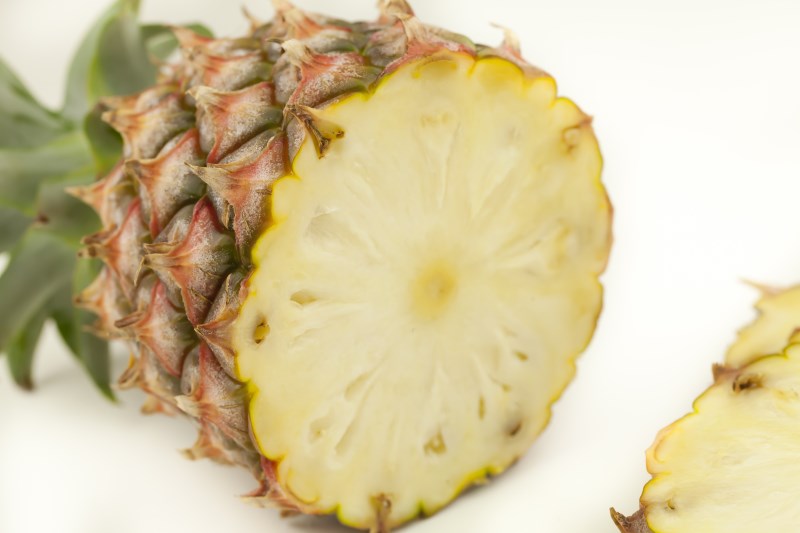
How to Incorporate More Pineapple Into Your Diet
Choose a pineapple with a firm, plump body without soft or bruising spots and green leaves at the crown.
A green outer shell does not mean the pineapple is not ripe.
Moreover, contrary to popular belief, how easily the leaves pull from the crown also do not indicate the ripeness of the pineapple.
The pineapple should be picked at its peak ripeness because it will not continue to ripen once picked, unlike other fruits.
In case you are consuming packaged or canned pineapple, make sure to pick up the varieties canned only in pineapple juice, not heavy syrup.
- Keep a bowl of freshly chopped fruit front and center in a clear container in the refrigerator. Seeing the fruit readily available will most probably urge you to choose it as a snack more often than raiding the cupboards for a less healthy, processed snack.
- Add pineapple to your favorite kebabs. Try chicken, shrimp, or steak kabobs with cherry tomatoes, onions, and pineapple.
- Make a fruit salad with mandarin oranges, strawberries, grapes, and pineapple. Top with unsweetened shredded coconut for a fresh twist.
- Add a few pineapple slices to your salad at lunch or dinner. Complement pineapple with pecans or walnuts, crumbled cheese and citrus, or a light balsamic vinaigrette dressing.
- Make your own juice! Nothing tastes better than fresh fruit juice in the morning. Making your own fruit juice ensures that no added preservatives or sweeteners are present.
- Make a fresh salsa with mango, pineapple, jalapeno, red peppers, and chipotle pepper. Use it as a topper for your favorite fish tacos.

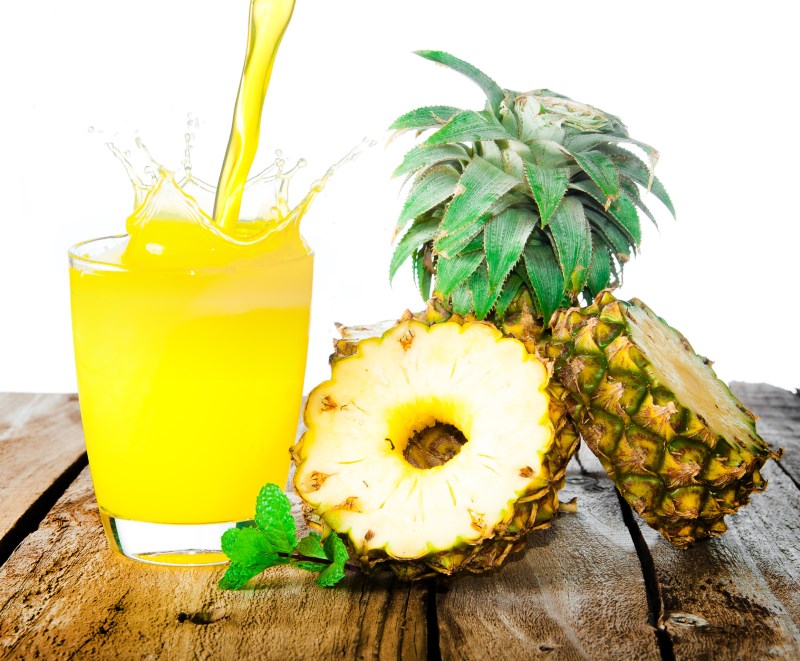
Precautions
Most people tolerate pineapple, but it may irritate the mouth in some individuals.
Some people are allergic to pineapple, i.e., bromelain, which can also interact with the function of certain medications.
Those taking antibiotics, blood thinners, anticonvulsants, anticoagulants, barbiturates, benzodiazepines, tricyclic antidepressants, and insomnia drugs should be careful not to eat too much pineapple.
Mouth Irritation
Pineapple is a great meat tenderizer, but eating too much pineapple can lead to tenderness of the mouth, including lips, cheeks, and tongue.
It is a harmless condition, though, and should resolve itself within a few hours.
The main cause of this medical condition is bromelain, the protein-digesting enzyme found in a pineapple’s fruit and stem.
Pineapple Allergy and Cross-Reactivity
Eating large amounts of pineapple can also cause allergic reactions, with such symptoms as skin rashes, itching, runny nose, abdominal pain, vomiting, diarrhea, and even severe allergic shock (74, 75).
People who suffer from allergies to latex, grass pollen, or birch pollen may also experience allergic reactions to pineapple as a result of cross-reactivity (76, 77).
The cross-reactivity is a result of the body’s inability to identify the proteins found in pineapple.
Instead, it identifies them as similar allergy-causing proteins found in latex or pollen, causing allergic reactions to the fruit.
Eating Unripe Pineapple
According to the horticulture department at Purdue University, eating unripe pineapple or drinking unripe pineapple juice is harmful to your body.
It is toxic to humans and can cause severe diarrhea and vomiting.
Eating plenty of pineapple cores can also lead to fiber balls to form in the digestive tract.
Medication Concerns
People taking the above-mentioned medications should consider consulting with their doctor before incorporating pineapple or bromelain supplements into their daily eating regime.
Pineapple has been shown to prevent accumulation of blood platelets and may also have blood-thinning effects (79, 80).
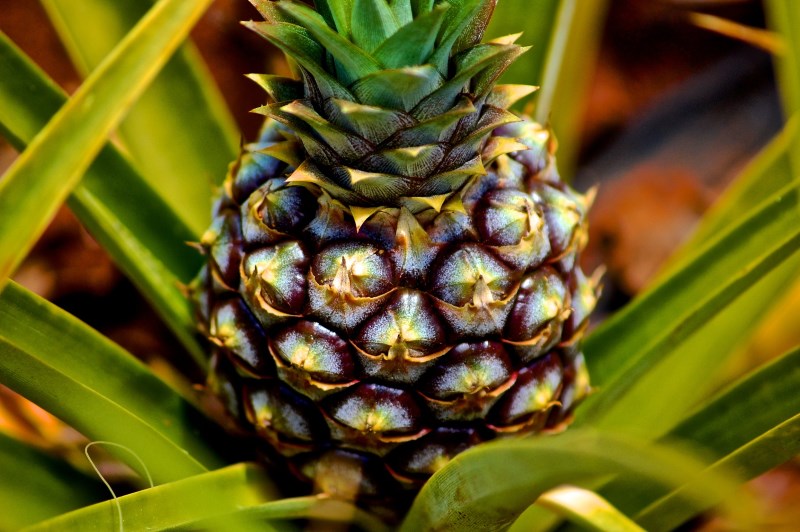
Conclusion
Pineapple is good for you, no matter your age.
Children who eat pineapple get what they need for bone development, and adults gain bone support.
It is just one of the great benefits of this tropical fruit.
Above all, bromelain, a unique enzyme found only in pineapple, also provides people with numerous benefits, from cancer-fighting capabilities to healing severe burn wounds and treating arthritis.
You have heard the story.
What are you waiting for?
Buy some pineapple today, and enjoy its health benefits and sweet taste.
FDA Compliance
The information on this website has not been evaluated by the Food & Drug Administration or any other medical body. We do not aim to diagnose, treat, cure or prevent any illness or disease. Information is shared for educational purposes only. You must consult your doctor before acting on any content on this website, especially if you are pregnant, nursing, taking medication, or have a medical condition.
HOW WOULD YOU RATE THIS ARTICLE?
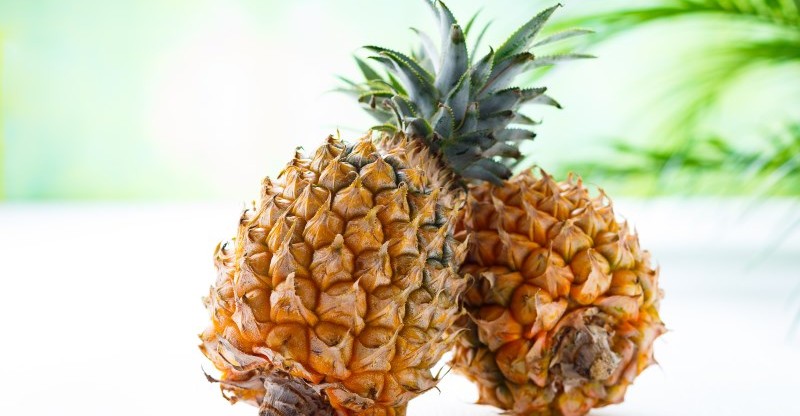


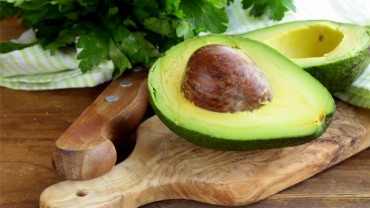

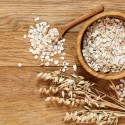
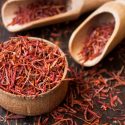
Does drinking pineapple juice have the same effect as eating pineapple???
Hello Veronica! Pineapple juice is very beneficial though eating a fresh pineapple is better for you 🙂
Isn’t pineapple loaded with too much sugar? Can it really help with weight loss?
How much pineapple can you eat a day?
Hi Jason,
Recommended daily intake for men is 2 cups per day.
What of women?
Hello Judith! I suppose 1,5 of a cup will be right portion for women:)
my interest is the anti-inflammatory properties of pineapple. I have been diagnosed with a Myositis with ‘nothing can be done’. As it is inflammation of the muscles, I’m thinking that pineapple may help. is my thinking correct?